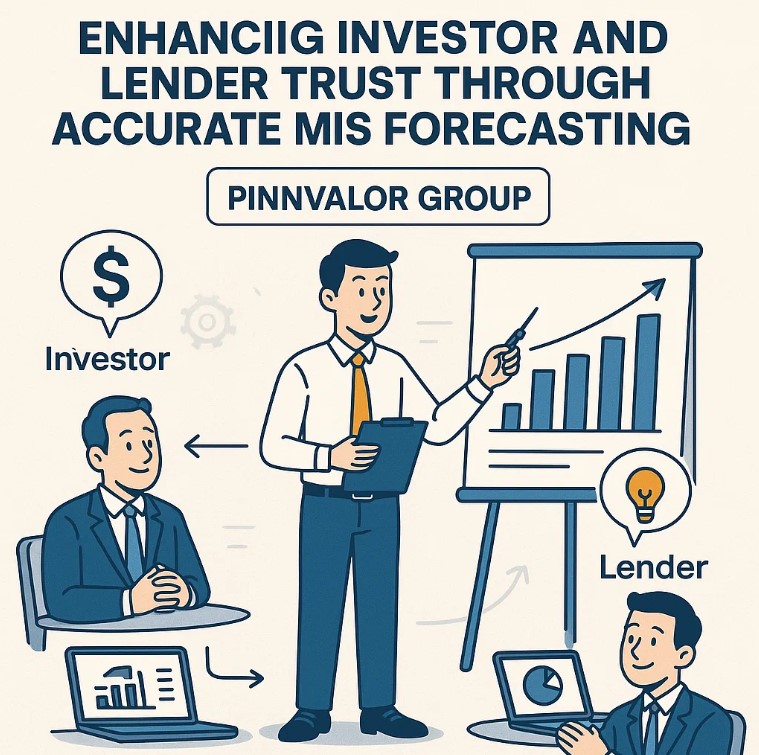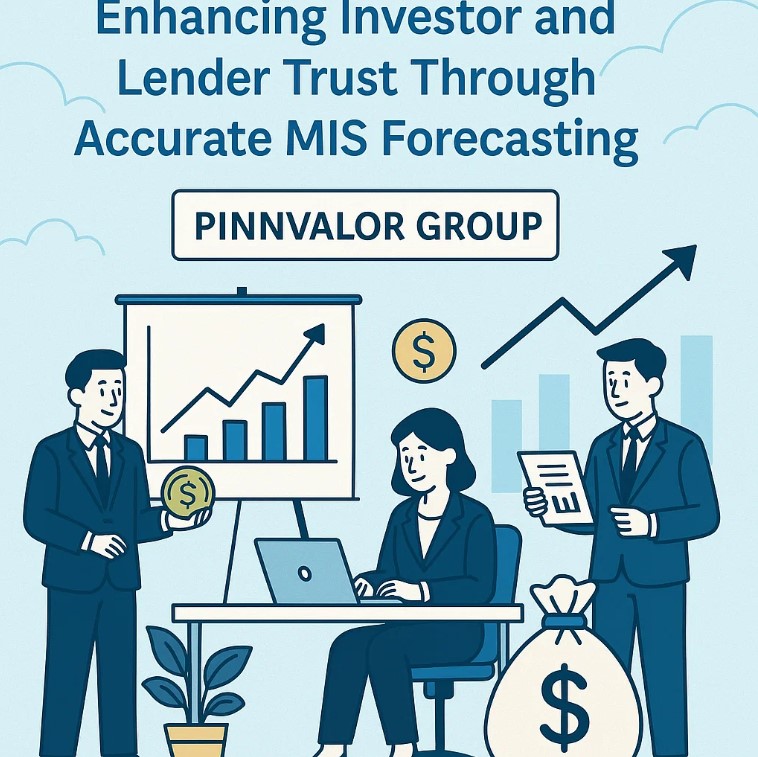
Enhancing Investor and Lender Trust Through Accurate MIS Forecasting
In today’s competitive and fast-moving business landscape, trust is currency. For startups seeking venture capital, SMEs applying for loans, or large corporations managing investor relations, building and maintaining trust with financial stakeholders is essential. One of the most effective ways to foster that trust is through accurate Management Information System (MIS) forecasting.
Can your MIS forecasts convince investors and lenders to bet on your business?
A solid MIS forecast tells lenders and investors: ‘We know where we’re going—and how to get there.
In this blog, we explore how robust MIS forecasting not only serves as a backbone for internal decision-making but also acts as a powerful tool to attract, inform, and reassure investors and lenders.
What Is MIS Forecasting?
Management Information System (MIS) forecasting involves the projection of key business metrics—such as revenue, expenses, cash flows, and profitability—using a combination of historical data, market trends, and business insights. MIS forecasting provides a data-driven narrative of where the business is headed, helping both internal stakeholders and external financiers assess its viability.
Why Is MIS Forecasting Critical for Investors and Lenders?
1. Transparency & Credibility
Investors and lenders want clarity. When an organization provides consistent, data-backed financial forecasts, it signals transparency and professionalism. This reduces perceived risk and builds confidence in the leadership team.
“A clear MIS forecast is often the first filter used by investors to judge whether the management understands its business.”
2. Risk Assessment & Mitigation
Lenders are particularly focused on repayment capacity, while investors look for ROI and business scalability. Accurate forecasting helps them evaluate:
- Cash flow adequacy
- Debt-servicing ability
- Burn rate vs. runway
- Breakeven timelines
Well-presented MIS data allows them to model their risk exposure and make informed decisions.
3. Strategic Alignment
When forecasts are aligned with strategic goals (e.g., expansion, product development, market entry), it reassures financiers that the business isn't operating on guesswork but has a clear, data-supported trajectory.
Key Components of an Effective MIS Forecast for Stakeholders
To enhance trust, your MIS forecasting should include the following elements:
1. Detailed Financial Projections
- Profit & Loss (P&L) forecast
- Cash flow statement
- Balance sheet projections
- Scenario planning (base, optimistic, and pessimistic cases)
2. Operational KPIs
Metrics like:
- Customer acquisition cost (CAC)
- Monthly recurring revenue (MRR)
- Gross margins
- Inventory turnover
These show how efficiently the business is running.
3. Market & Competitor Analysis
Show that your forecasts are grounded in market realities—include external data, benchmarks, and competitive positioning.
4. Assumption Clarity
Clearly state the assumptions behind your forecasts. This allows investors/lenders to understand the logic and perform their own stress tests if needed.
Common Mistakes to Avoid
- Overly optimistic projections: Unrealistic growth can raise red flags.
- Lack of historical data alignment: If forecasts don’t reflect past trends or explain deviations, credibility suffers.
- Inconsistency across reports: MIS data must match what’s in your pitch decks, loan applications, and financial statements.

Tools & Best Practices
1. Adopt Forecasting Software
Modern tools like Microsoft Power BI, Tableau, or specialized financial forecasting platforms (e.g., Fathom, Jirav, or Spotlight Reporting) can automate and streamline MIS reporting.
2. Regularly Update Forecasts
Markets evolve, and so should your forecasts. Monthly or quarterly updates keep your data relevant and decision-ready.
3. Tailor Reporting to the Audience
Lenders may focus more on debt coverage ratios, while VCs may want user growth projections. Customize MIS reports to reflect what's most relevant to the stakeholder.
Case Study Example
A SaaS startup seeking Series A funding presented three-year MIS forecasts that included:
- Customer acquisition assumptions
- Tiered subscription revenue projections
- Break-even timeline within 18 months
- CAC and LTV metrics
Because the projections were tied to verifiable assumptions (e.g., growth based on past marketing performance), the investors felt confident, resulting in a successful $5M raise.
Conclusion
In a world where capital is cautious and competition is fierce, accurate MIS forecasting isn’t just a reporting exercise—it’s a trust-building tool. By delivering clear, consistent, and credible forecasts, businesses can significantly improve their ability to attract funding, secure loans, and drive strategic partnerships.
